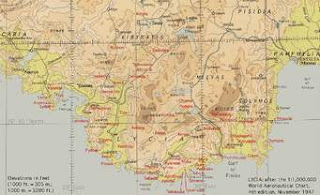NEBULAR THEORY ABOUT THE ORIGIN OF THE EARTH
The nebular hypothesis is the most widely accepted model in the field of cosmogony to explain the formation and evolution of the Solar System. It suggests that the Solar System formed from nebulous material. The theory was developed by Immanuel Kant and published in his "Universal Natural History and Theory of the Heavens", published in 1755. Originally applied to the Solar System, the process of planetary system formation is now thought to be at work throughout the Universe.The widely accepted modern variant of the nebular hypothesis is the solar nebular disk model (SNDM) or solar nebular model. It offered explanations for a variety of properties of the Solar System, including the nearly circular and coplanar orbits of the planets, and their motion in the same direction as the Sun's rotation. Some elements of the nebular hypothesis are echoed in modern theories of planetary formation, but most elements have been superseded.
According to the nebular hypothesis, stars form in massive and dense clouds of molecular hydrogen clouds. These clouds are gravitationally unstable, and matter collided within them to smaller denser clumps, which then rotate, collapse, and form stars. Star formation is a complex process, which always produces a gaseous protoplanetary disk around the young star. This may give birth to planets in certain circumstances, which are not well known. Thus the formation of planetary systems is thought to be a natural result of star formation. A Sun-like star usually takes approximately 1 million years to form, with the protoplanetary disk evolving into a planetary system over the next 10–100 million years.
The protoplanetary disk is an accretion disk that feeds the central star. Initially very hot, the disk later cools in what is known as the T tauri star stage; here, formation of small dust grains made of rocks and ice is possible. The grains eventually may coagulate into kilometer-sized planetesimals. If the disk is massive enough, the runaway accretions begin, resulting in the rapid 100,000 to 300,000 years formation of Moon to Marssized planetary embryos. Near the star, the planetary embryos go through a stage of violent mergers, producing a few terrestrial planets. The last stage takes approximately 100 million to a billion years.


Comments
Post a Comment